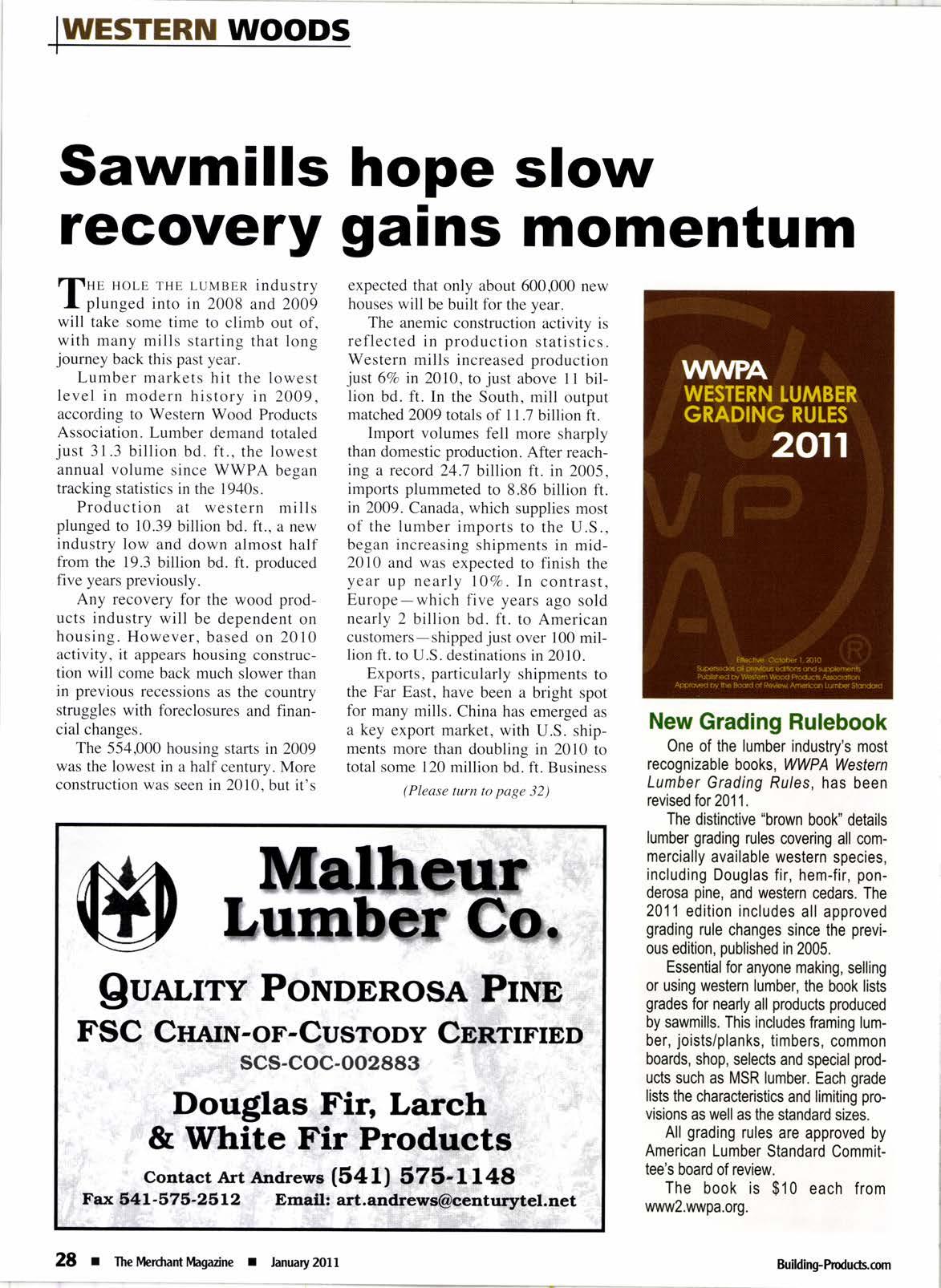
1 minute read
Sawmills hope slow recovery gains momentum
tTtur HoLE rHE LUTvtBER industry
I plunged into in 2008 and 2009 will take some time to climb out of, with many mills starting that long journey back this past year.
Lumber markets hit the lowest level in modern history in 2009, according to Western Wood Products Association. Lumber demand totaled just 31.3 billion bd. ft., the lowest annual volume since WWPA began tracking statistics in the 1940s.
Production at western mills plunged to 10.39 billion bd. ft., a new industry low and down almost half from the 19.3 billion bd. ft. produced five years previously.
Any recovery for the wood products industry will be dependent on housing. However, based on 20 10 activity. it appears housing construction will come back much slower than in previous recessions as the country struggles with foreclosures and financial changes.
The 554,000 housing starts in 2009 was the lowest in a half century. More construction was seen in 2010. but it's expected that only about 600000 new houses will be built for the year.
The anemic construction activity is reflected in production statistics. Western mills increased production ju'st 6Va in 2010, to just above l l billion bd. ft. In the South, mill output matched 2009 totals of I1.7 billion ft.
Import volumes fell more sharply than domestic production. After reaching a record 24.7 billion ft. in 2005, imports plummered to 8.86 billion ft. in 2009. Canada, which supplies most of the lumber imports to the U.S., began increasing shipments in mid2010 and was expected to finish the year up nearly 10Vo. ln contrast, Europe-which five years ago sold nearly 2 billion bd. ft. to American customers-shipped just over 100 million ft. to U.S. destinations in 2010.
Exports, particularly shipments to the Far East, have been a bright spot for many mills. China has emerged as a key export market, with U.S. shipments more than doubling in 2010 to total some 120 million bd. ft. Business
(Please turn to page 32)
New Grading Rulebook
One of the lumber industry's most recognizable books, WWPA Western Lumber Grading Ru/es, has been revised for 2011.
The distinctive "brown book" details lumber grading rules covering all commercially available western species, including Douglas fir, hem-fir, ponderosa pine, and western cedars. The 201 1 edition includes all approved grading rule changes since the previous edition, published in 2005.
Essential for anyone making, selling or using western lumber, the book lists grades for nearly all products produced by sawmills. This includes framing lumber, joists/planks, timbers, common boards, shop, selects and special products such as MSR lumber. Each grade lists the characteristics and limiting provisions as well as the standard sizes.
All grading rules are approved by American Lumber Standard Committee's board of review.
The book is $10 each from www2.wwpa.org.

By Craig Larsen, Softwood Export Council

